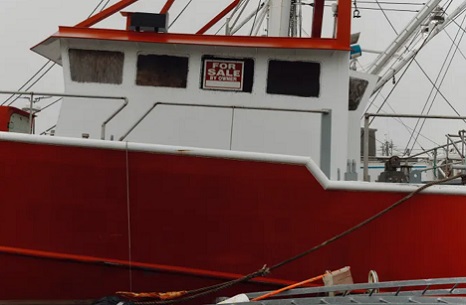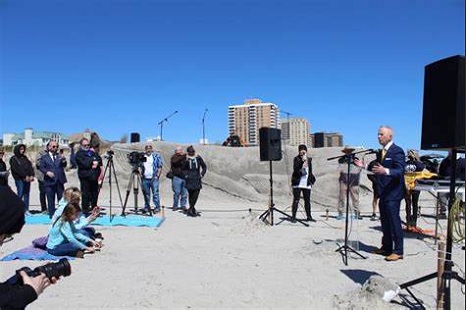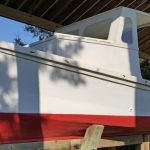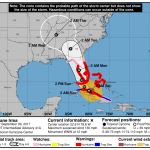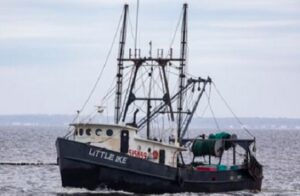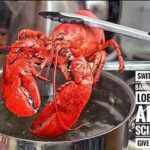Standing next to a 30-square-foot sand drawing of a humpback whale and her calf, U.S. Rep. Jeff Van Drew and other speakers made a call to “save the whales” Sunday afternoon. Van Drew, R-2nd, and state Sen. Vince Polistina, R-Atlantic, headlined a half-dozen speakers who once again opposed proposals for wind turbines off the coast of New Jersey and other Eastern states, claiming the sonar testing has led to a rise in marine mammal deaths over the past four months. They spoke to about 500 people on the beach at Suffolk Avenue. “Those whales — and I don’t mean to sound corny — were a divine blessing from God to wake us the hell up and say we’ve got to do something. This is the real thing. We are really in trouble with this and we’ve got to fight,” Van Drew said. Video, and a pile of photos! >click to read< 21:22
Tag Archives: BOEM

Maine Delegation, Gov. Mills asks BOEM to listen to fishermen, remove LMA1 from wind power planning

Offshore Wind Litigation: Court Declines to Halt Vineyard Wind Construction
A federal court has denied a request by members of the fishing industry to pause offshore construction of the Vineyard Wind Project (Project), the first modern utility-scale offshore wind project in the United States to receive all permits and approvals necessary to begin construction. On May 25, 2023, Judge Indira Talwani of the US District Court for the District of Massachusetts denied a motion for stay, or in the alternative, for preliminary injunction,,, In Seafreeze Shoreside, Inc. et al. v. US Department of the Interior et al., the plaintiffs alleged that the Bureau of Ocean Energy Management (BOEM) and various other federal permitting agencies violated the National Environmental Policy Act (NEPA), the Outer Continental Shelf Lands Act (OCSLA), and a variety of other statutes and regulations by issuing the Project’s lease and its final approvals. >click to read< 16:57
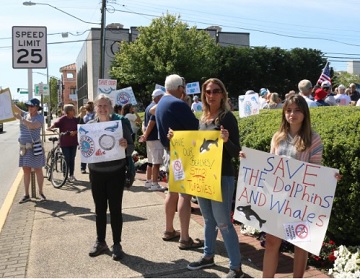
Wind Farm Protesters March in Ocean City
Opposition to the wind farm has been mounting following more than 30 whale deaths along the East Coast that critics have blamed on sonar mapping of the seabed that is needed for construction of the project. However, government agencies such as the National Oceanic and Atmospheric Administration and the New Jersey Department of Environmental Protection say the recent deaths of whales, dolphins and other marine creatures in New Jersey and other coastal states have nothing to do with the wind farm work. They say evidence shows that most of the whales were struck and killed by shipping traffic. Opponents reject those claims, though. During Saturday’s protest, speakers pointed the finger at the wind farm for the whale deaths and warned of other possible dire impacts that the project could have on the Jersey Shore’s environment, the tourism industry and commercial fishing operations. Photos, Video, >click to read< 07:55
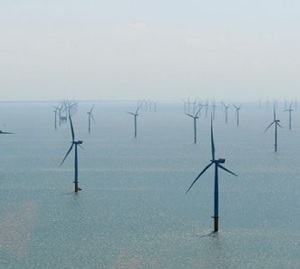
Cape May County to fight Ørsted, Ocean Wind 1, 2
“At first, the County of Cape May was interested in trying to work with Ørsted to find a way forward, perhaps with some modifications to the project to reduce visual, environmental and economic impacts,” Commission Director Len Desiderio said in a release issued by the county. “We would like to see land-based offshore wind facilities and supply-chain infrastructure built here in New Jersey, since that would create good opportunities for trade workers and others. But we cannot sit quietly by as hundreds of windmills are installed off our beaches as state and federal government agencies ignore our legitimate and serious concerns. “As time went by, it became clear that Ørsted was not interested in finding any compromise,” Desiderio said. “It is clear to us now that the approach among this foreign corporation and their partners in the state and federal governments is to build these things as fast as they can despite the potential for devastating environmental and economic impacts. >click to read< 09:42

California: Can wind energy and fishing industry co-exist on the coast?
A statehouse hearing on offshore wind energy explored “The Future of Fisheries and Offshore Wind Energy in the Golden State” and fishing representatives said the scenario is unknown and they’re concerned. Fishermen are bracing for impacts to their livelihoods, as leases for five areas off the California coast, including two in Humboldt making up about half of $775 million plus in lease sales, have been federally-approved. Unavoidable impacts to fishing are expected so compensation for consequences like loss of fishing grounds will eventually be calculated. But fishing representatives said at this point the scale of the impacts can only be guessed and the leasing process hasn’t been inclusive enough. >click to read< 11:12
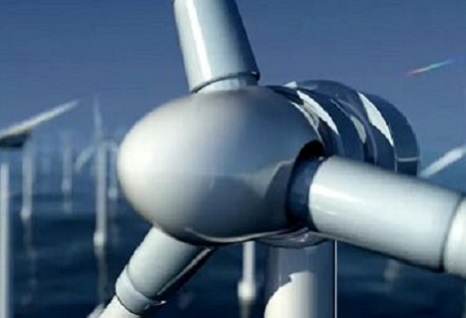
Wind project scope ‘staggering’
It wasn’t “until the whales and the dolphins started washing up that people’s attention was able to focus” on the offshore wind farms, according to Cindy Zipf, and when people looked beyond the whales, they realized what is happening is “staggering.” “I don’t think ever in the history of mankind have we proposed to industrialize an ecosystem this fast and at this magnitude,” she said. Zipf is executive director of Clean Ocean Action, a coalition of groups dedicated to protecting the ocean. Zipf acknowledges the pace at which the plans are moving forward is making efforts to slow or stop them difficult. “It’s challenging considering how fast-tracked everything is and how limited the permitting process is. It’s kind of under the jurisdiction of two people to make it happen, President Biden and Gov. Murphy,” she said. “Hopefully as more is understood there will be some more caution but as it is right now the (state and federal) agencies are very enthusiastic.” >click to read< 16:29
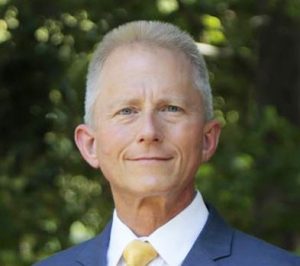
Congressman Van Drew Joins Chairman Westerman on Natural Resources in Leading Letter to GAO Requesting Offshore Wind Study
“BOEM and offshore wind companies have engaged in a sloppy and rushed environmental review process—ignoring national security concerns, ignoring concerns from our fishermen, and ignoring impacts on our ocean life—all in the name of ‘climate change,'” said Congressman Van Drew. “We must continue to demand transparency throughout this process. Without diligent oversight, we risk not only our natural resources and local economies, but the livelihoods of the constituents we serve as well. I thank Chairman Westerman for his support in uncovering the real impacts these offshore wind turbines will have on our coast, including the economic impact on pertinent industries and the effects on sensitive environments.” >click to read< 10:31

Old lumber port preps for new life as California offshore wind hub
Eureka’s halcyon days as the “timber capital” of California are long gone, but the deepwater port city 270 miles north of San Francisco may see its fortunes turn as the hub of the state’s first foray in offshore wind energy. Eureka sits across two of the five swaths of Pacific Ocean along the California coast that the federal government auctioned off to offshore wind developers this past December for a total of $757 million. The three other leases are on the Central Coast across from Morro Bay. Humboldt Bay, the second-largest bay in California after the San Francisco Bay, is ideally suited to become the final assembly port for the massive turbines. >click to read< 15:43

Environmental Regulations and Wind Turbines Are Backing New England Fishermen into a Corner
Just three weeks ago, Jerry Leeman was a commercial fishing captain in New England and a very successful one at that. Now, as executive director of the newly formed New England Fishermen Stewardship Association, he’s leading the charge against Biden administration policies that threaten the industry he loves, including overregulation and wind-turbine development in the Gulf of Maine. Leeman said that he and fellow New England fishermen have serious concerns about the accuracy of the NOAA data. Fish-population assessments fell to the wayside during the Covid years — 2021 and 2022 — and the data-collection process has not yet been corrected. “Whether you’re a lobsterman or a ground fisherman, a trend up and down the coast here is that nobody wants wind turbines placed in our environment. It’s going to mess up our stocks and our species. Not to mention it’s going to change the viability for generations to come in the fishing grounds,” Leeman said. Photos, >click to read< 07:51

Where have all the dead whales gone? By Nils Stolpe, FishNet-USA
Beginning in December of last year and extending through most of the first quarter of 2023, New Jersey and New York beaches were inundated with abnormally high numbers of dead or dying whales and smaller marine mammals. These majestic creatures-though not so majestic when being pushed about willy-nilly by tides, wind, waves and various types of earth moving machines-have never expired in such large numbers in such publicly accessible locations in local residents’ memories. Perhaps coincidently, intensive hydroacoustic surveys to determine the suitability of potential sites for the construction of thousands of gigantic windmills and their supporting infrastructure (supposedly to help us all survive what is being sold as an imminent energy/climate crisis) were being committed offshore of the beaches where all of these marine mammal deaths and strandings have been concentrated. To us inveterate observers of that hunk of Atlantic Ocean real estate known as the New York Bight, and the critters that temporarily or permanently live there, and of the actions of the public agencies charged with-and entitled to tens of millions of taxpayer dollars each year to do so-administering the Endangered Species and the Marine Mammal Protection Acts, that surely hints at, at best, ineptitude at that’s ineptitude at a fairly advanced level. >click to read the article< 16:14
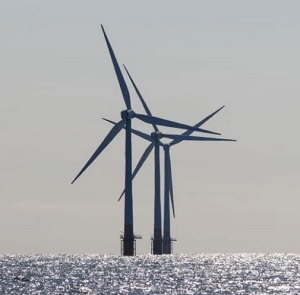
Revolution Wind offshore wind farm project clears CRMC hurdle. What’s next for the project?
The vote by the Coastal Resource Management Council moved Revolution Wind one step closer to becoming the third utility-scale offshore wind farm to be cleared for construction in America. The vote came despite objections from fishermen, who say the project and others like it will shut them out of fishing grounds and cause economic losses in their industry. Not all in the fishing industry are against the project. David Yerman, a Connecticut fisherman whose firm is employed by Ørsted and Eversource, said those in the industry can work with offshore wind developers. “Offshore wind development is not a threat to commercial fishing,” he said. “It is an opportunity.” But every other person from the fishing industry that spoke voiced opposition to the application. >click to read< 09:49

Fewer turbines but more conflict for Revolution Wind farm
The fishing industry and offshore wind developers are again at odds over how a mammoth array of 80-story-high wind turbines will affect ocean species, and the fishermen whose livelihoods depend on them. And without consensus on the potential damage, the two sides also can’t agree on what measures – including money – are enough to offset the harm caused by the Revolution Wind project. Even a 33% cut to the number of wind turbines – from 100 to 65 – negotiated by state coastal regulators hasn’t done much to reduce conflict. Developers Orsted A/S and Eversource Energy LLC have agreed to pay $12.9 million, to commercial and charter boat fishermen to offset potential revenue losses caused by the noise, electromagnetic field waves, boulder moving and other disturbances that the towers and undersea cables cause to the delicate underwater ecosystem. >click to read< 08:46
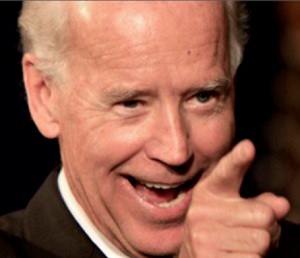
U.S. identifies Gulf of Maine area for offshore wind development
President Joe Biden’s administration on Tuesday said it had finalized an area of nearly 10 million acres in the Gulf of Maine for potential offshore wind development, a major step toward expanding the industry into northern New England. The announcement was the latest milestone in the government’s plan to put wind turbines along every U.S. coastline to help displace fossil fuel for power generation and fight climate change. In a statement, the U.S. Bureau of Ocean Energy Management said it would kick off a 45-day period for public comment on the area, which sits off the coasts of Massachusetts, New Hampshire and Maine. >click to read< 08:25
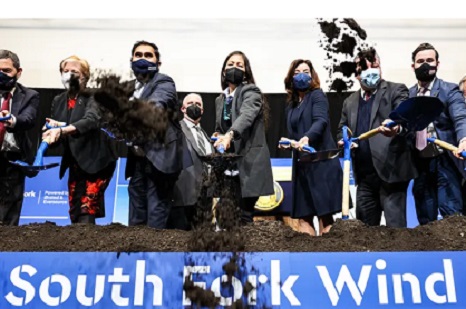
Fishery council executive directors warned Biden admin about dangers wind energy projects pose to fishing industry
In an Aug. 22 letter to former Bureau of Ocean Energy Management (BOEM) Director Amanda Lefton, the three officials, who respectively lead the New England, Mid-Atlantic and South Atlantic Fishery Management Councils, expressed concern about current processes for approving offshore wind development. They also made a series of recommendations to help the federal government mitigate impacts on fisheries. “As we have stated in several past comment letters to BOEM, we are very concerned about the cumulative impacts of multiple wind energy projects on the fisheries we manage,” they stated in the letter. “The multiple wind energy projects planned along the east coast will have cumulative and compounding effects on our fisheries.” >click to read< 08:32
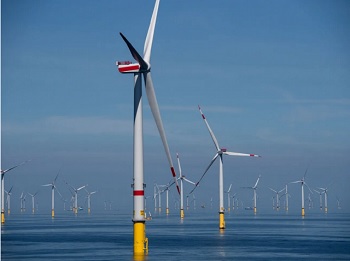
Congressman Van Drew: National Security is the Price We Will Pay
On April 17, Congressman Van Drew issued the following statement after the Pentagon sounded the alarms on how the development of offshore wind farms will affect our national security. “During my field hearing in South Jersey last month, my colleagues and I highlighted the adverse effects offshore wind development would have on various sectors and industries, from our environment to our national security, “said Congressman Van Drew. “These warnings can no longer be ignored. This President and this administration continue to disregard these valid concerns,,, >click to read< 08:06

Morro Bay – Winds of Change
The offshore wind industry is expected to grow in coming years, sourcing a global market for renewable energy. The waters off Morro Bay have been sanctioned by The Bureau of Ocean Energy Management (BOEM) as a viable site for offshore wind development, considering the town’s existing electrical transmission capabilities. The introduction of an offshore wind farm would have devastating effects on Morro Bay due to the town’s historic reliance on the fishing industry. This project has the potential to displace fishermen and cause widespread economic harm to the community. Winds of Change explores the complexities of this case, while giving underrepresented fishermen a voice in the matter. Video, >click to watch< 10:01

EXCLUSIVE: Federal Regulator Acknowledges Danger to Wildlife Caused by Offshore Wind Farms
Captain Jerry Leeman, who heads the fishing vessel F/V Teresa Marie IV, sent a copy of the Norwegian haddock study to Nies in a January 9 letter. “Thank you for your January 9 letter … A federal fisheries council acknowledged that some power cables for offshore wind turbines could harm certain fish, according to a letter seen by the DCNF. Multiple recent studies have demonstrated that a variety of commercially popular fish can be negatively impacted by their exposure to magnetic fields emitted by high voltage direct current cables, which can confuse their ability to navigate and, in some cases, leave them exposed to predators. “We were previously aware of this study and agree that it has concerning implications for the possible effects of high voltage direct current cabling on larval behavior and resulting predation rates,” Thomas Nies, executive director of the New England Fishery Management Council (NEFMC), said in a January 18 letter. >click to read< 20:01
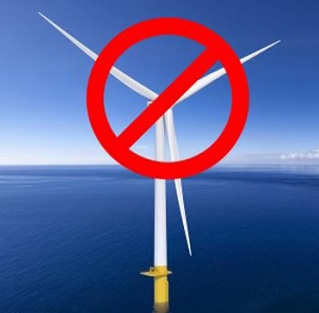
Resistance to Offshore Wind Is Growing on US Coasts
A growing chorus of interest groups is calling for a pause in offshore wind activities to allow further assessment of the sector’s impacts on the marine ecosystem. Fishing groups and local residents have filed five lawsuits against proposed or under-construction wind projects along the Atlantic seaboard. A leading body for the U.S. Pacific fishing industry is urging the federal government to call off its proposed auction for offshore wind off the Oregon coast. And the United States’ largest lobbying group for Native Americans recently called for a halt to all offshore wind scoping and permitting. Wind energy is a key component of the Biden Administration’s climate agenda. >click to read< 08:10
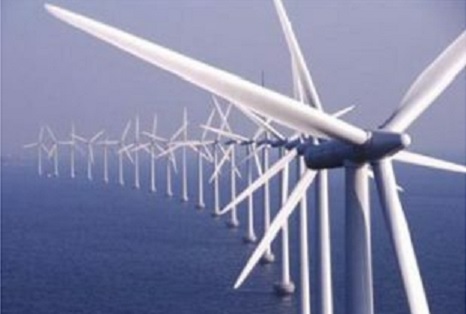
Nils Stolpe: How many statisticians does it take to….
Screw in a lightbulb? Trivialize the deaths of at least two dozen whales? Convince the world that the massive installation of wind power off our East Coast won’t irreparably damage our estuarine, inshore and offshore ecosystems? The folks at NOAA/NMFS (and with the convenient parroting of myriad so-called environmentalists, and BOEM, the other part of the federal cheerleading squad selling Ocean Wind as a major solution to our “energy crisis”) have declared that it hasn’t been proven that there aren’t any relationships between the extensive survey work being committed by Big Wind and the associated contractors and the two dozen deaths that have been visited upon several species of whales off New York and New Jersey. What is their proof? Inadequately enough, their “proof” boils down to the fact that they have seen no proof. To my way of thinking, that’s tantamount to convicting someone of murder because there is no proof that he or she isn’t a murderer. But it appears as if, as far as dead whales and President Biden’s and New Jersey’s Governor Murphy’s windmill fantasies are concerned, that’s good enough. At least for NOAA/NMFS, BOEM and a bunch of environmental organizations. Why? >click to read< 09:54
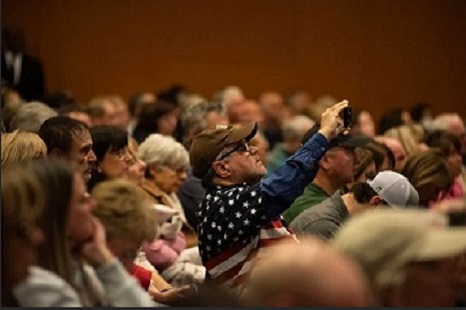
New Jersey: Van Drew leads chorus of condemnation of wind projects in Wildwood
If there were any fans of offshore wind energy proposals in the Wildwoods Convention Center on Thursday afternoon, they kept quiet during a congressional hearing on the issue, led by U.S. Rep. Jeff Van Drew, R-2nd. Over about 2½ hours, speakers dove into what they see as problems with the proposal for wind turbines off the coast of New Jersey and other Eastern states, and with the state and federal approval process they say favors the wind developers. The hearing was billed as “An Examination into Offshore Wind Industrialization.” After opening statements, which were each deeply critical of the wind power plans, the Congress members heard from environmental advocates, an attorney representing Cape May County, a fishing industry member and others. They did not hear from Ørsted, the Danish energy company that owns Ocean Wind 1, the offshore wind power project expected to be the first in operation off New Jersey. Photos, Video, >click to read< 07:43

Pacific Fishery Management Council says Rescind Oregon OSW Call Areas
The Pacific Fishery Management Council acted today to join a chorus of voices recommending the Bureau of Ocean Energy Management rescind the current Oregon call areas designated for floating offshore wind energy development. Heather Mann, Executive Director of the Midwater Trawlers Cooperative and one of the leaders of the informal coalition Protect US Fishermen said in her testimony, “we hear the climate crisis is so severe that collateral damage to birds, whales, the California current ecosystem, food security, even to fisheries, fishermen and rural community economies is an accepted part of the transition to cleaner energy. That is an unacceptable premise to me, and I hope it is to you as well.” The motion passed unanimously (10-0) with four abstention votes cast by the state representatives for Oregon, Washington, and California as well as the NMFS representative. >click to read< 19:24
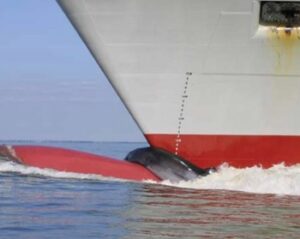
Whale death confusion abounds, and some is deliberate
Press coverage of the tragic whale deaths is a supreme study in confusion, especially the foolish attempts to somehow exonerate offshore wind development. Here are some prominent examples. The evergreen New York Times wins the race for worst coverage by claiming to explain the numerous recent whale deaths as due to online shopping. I am not making this up. Their headline promises an explanation: “Why 23 Dead Whales Have Washed Up on the East Coast Since December”. The primary reason claimed is that East Coast shipping has increased due to people buying lots of stuff post Covid, especially online, and ship strikes account for a lot of the deaths. >click to read< 13:11

Fed Official: Offshore Wind Will Adversely Impact North Atlantic Right Whale
Ahead of his March 16 hearing on offshore wind at the Wildwood Convention Center, Congressman Jeff Van Drew is challenging the federal government and offshore wind companies to prove they have nothing to hide when it comes to negatively impacting the environment. “Hearings are critical,” he said in a statement released last week condemning President Joe Biden’s administration for “its continual lack of transparency with the American people – this time about the correlation of offshore wind development and the death of endangered whales.” Van Drew’s latest comments follow the release of a May 13, 2022 missive from Sean Hayes, chief of protected species for NOAA’s National Marine Fisheries Service. In the letter to Brian Hooker, lead biologist for Bureau of Ocean Energy Management, Office of Renewable Energy Programs, Hayes laid out how offshore wind development in New England would negatively affect the North Atlantic right whale. >click to read< 08:04
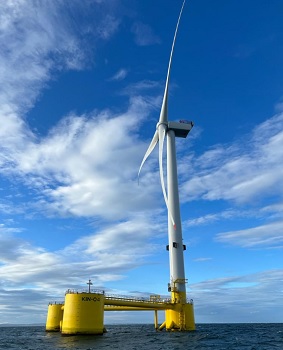
Panel discusses impact of offshore wind on West Coast fisheries
The Biden administration has called for deploying 30 gigawatts of offshore wind energy to combat climate change by 2030. Depending on where the turbines are placed, they could displace highly productive fishing grounds that account for billions of dollars and thousands of jobs in Oregon, Washington and California. Projects must be planned carefully using the best available science to mitigate potential damage, according to a panel of experts who spoke March 1 at the Northwest Offshore Wind Conference in downtown Portland. >click to read< 11:52
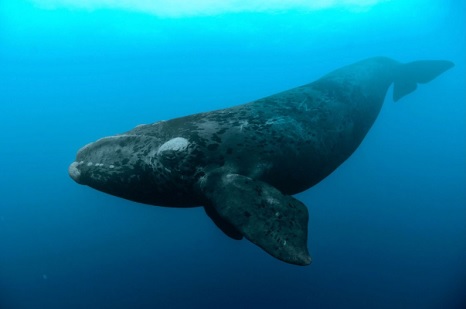
Blue State Enviro Groups Demand Answers From Green Biden Administration On Whale Deaths
Nonprofit groups in the state’s coastal towns have spent months trying to get the administration to place a moratorium on offshore wind projects until a thorough, transparent investigation can be completed to see if there is a connection to recent whale strandings. Since December 2022, over 20 whales have washed up along east coast shores near survey sites for future offshore wind projects in an unusual mortality rate, according to NOAA. “The low-frequency sonar used in the windmills is causing deafness in the whales. It’s one of those things that science is only going to pick up on years after the fact, in the meantime, whales are being killed,” James Lovgren, board of trustee member of Clean Ocean Action and retired commercial fisherman, told the DCNF. “You have to pause and ask, ‘why are we doing this?’” >click to read< 09:17
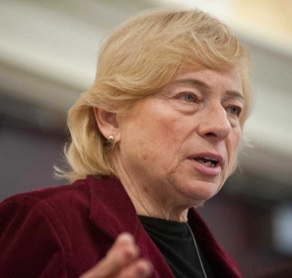
Many voices weigh in on offshore wind plan
Three days after Governor Janet Mills unveiled an offshore wind roadmap, a “comprehensive plan that offers detailed strategies” for offshore wind power in the Gulf of Maine, a handful of unconvinced citizens gathered at the Sustainable Maine Fishing Foundation Feb. 26 on Bar Harbor Road in Trenton. The idea was to inform lobstermen and interested people on offshore wind development before a Bureau of Ocean Energy Management (BOEM) presentation that opens the Fishermen’s Forum March 2 in Rockport, board member Ginny Olsen said. Energy operations consultant George Stover of Freeport, who has worked in the state’s energy industry for decades, discussed the Maine power grid and its energy sources and why, to his mind, offshore wind power is not a good fit or needed here. “If they continue down this road, it scares me,” he said. He is not alone. The idea of floating offshore wind installations in the Gulf of Maine has raised fears and concerns from environmentalists and fishermen alike. >click to read< 12:42






